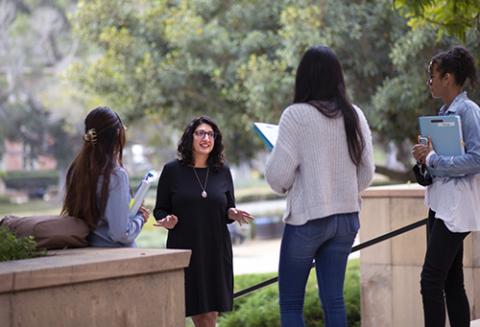California bail reform efforts coming up short, according to study by UCLA Law, Berkeley Law
Researchers find little evidence of change 18 months after landmark state supreme court decision

In March 2021, the California Supreme Court ruled that setting bail at an amount a person cannot afford to pay is unconstitutional. Attorneys and other observers heralded the In re Humphrey ruling as a historic decision and predicted it would lead to more people being released prior to trial.
But a new report (PDF) by the UCLA School of Law Bail Practicum and the UC Berkeley School of Law Policy Advocacy Clinic presents no evidence that the decision has made cash bail more affordable for those accused of crimes or decreased the use of pretrial detention.
The effects of the Humphrey decision have been closely watched across California, and particularly in Los Angeles County, where elected officials have committed to reducing the jail population in an effort to support the closure of Men’s Central Jail. Reducing the number of people in jail while they are awaiting trial would be one way to achieve that goal but, the study found, that number has not decreased even 18 months after the court’s ruling.
“Bail reform in California has been divisive to say the least,” said Alicia Virani, the Rosalinde and Arthur Gilbert Foundation Director of UCLA Law’s Criminal Justice Program and co-founder of the bail practicum. “But with the Humphrey decision, many thought that we would finally see relief for Californians, particularly Black, brown and indigenous people who are subject to targeted policing and more likely to be held pretrial.
“Instead, we found that many judges are finding new ways to justify holding people pretrial and expanding the reach of the system.”
The researchers analyzed pretrial release decisions and outcome data — as well as correspondence, policies, news articles and a statewide survey of defense attorneys — from all 58 California counties. Demonstrating that the promise of the Humphrey case remains unmet, the study found:
- No evidence of a decrease of California’s pretrial jail population.
- No evidence of a decrease in bail amounts across California.
- No evidence of a decrease in the average length of pretrial detention in California.
“All of the records and data we received point to the alarming conclusion that many judges are not following the mandates of the Humphrey decision,” said Rachel Wallace, clinical supervisor at the Berkeley Law Policy Advocacy Clinic. “Greater transparency around judicial decision-making and increased efforts towards judicial training are key to ensure judges are following the Humphrey standards.”
The report recommends structural and systemic change through the Judicial Council, the policymaking body of the state’s courts, and through the California Legislature to address the longstanding problems plaguing pretrial decision making. Among the recommendations:
- Adopting and enforcing a statewide zero-dollar bail schedule.
- Funding representation for indigent defendants prior to their arraignments, typically the earliest stage of a criminal case.
- Providing funds to establish agencies — separate from law enforcement departments — that would provide pretrial services for accused individuals.
“This report represents the first glimpse at implementation of the Humphrey decision across the state,” said Stephanie Campos-Bui, an assistant clinical professor at Berkeley Law and deputy director of the policy advocacy clinic. “If anything, we hope this report underscores for advocates, system actors, legislators and judges that there is still a lot of work to be done to realize the promise of Humphrey.”